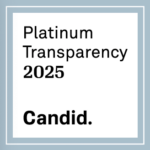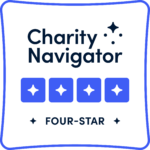The dismal accrual rates in cancer clinical trials are well known: Just 3% to 5% of adults with cancer enroll in clinical trials.1 The reasons patients are reluctant to participate in clinical trials are equally well known: fear of reduced quality of life, concern about receiving a placebo, and inconvenience.
Patient surveys1 and the Institute of Medicine report “A National Cancer Clinical Trials System for the 21st Century: Reinvigorating the NCI Cooperative Group Program”2 show that eligibility criteria, including age, stage of disease, presence of brain metastases, and prior treatment, are another impediment to clinical trial participation. A relatively recent study published in the Journal of Clinical Oncology found that, “Although eligibility criteria are necessary to define the population under study and conduct trials safely, excessive requirements may severely restrict the population available for study, and often this population is not reflective of the general population for which the drug would be prescribed.”3 The result of such anemic participation in cancer trials is that nearly 20% of publicly funded studies fail to recruit enough patients to render a judgment on the efficacy or safety of experimental therapies, hindering progress on the delivery of more effective treatments for patients with cancer.4
To examine how excessive or overly rigid eligibility criteria might impede clinical trial enrollment and identify areas where trial eligibility can be broadened to improve clinical trial accrual rates, this past May, ASCO and Friends of Cancer Research (Friends) announced a joint effort to modernize eligibility criteria where scientifically and clinically appropriate. The two organizations established a multidisciplinary group of more than 40 stakeholders from the cancer community, including cancer survivors, patient advocates, researchers, physicians, drug and biotech manufacturers, pharmacologists, and medical reviewers from the U.S. Food and Drug Administration (FDA). They organized these stakeholders into four working groups to develop consensus recommendations on four areas of clinical trial eligibility: brain metastases, HIV/AIDS, organ dysfunction, and minimum age requirement.
In a meeting on May 12, the working groups presented their preliminary recommendations to ASCO and Friends. The groups’ final recommendations will be presented at the Friends of Cancer Research Conference on Clinical Cancer Research in November and published later this year.
Greater Access to Clinical Trials
The launch of this initiative is the outgrowth of “ASCO’s Blueprint for Transforming Clinical and Translational Cancer Research,” issued in 2011.5 This blueprint outlined the need to establish a new approach to therapeutic development in this era of molecularly targeted agents.
“That report reinvigorated discussion about the need to modernize eligibility criteria for clinical trials. Friends of Cancer Research and the FDA were also evaluating clinical trial eligibility, so it made sense for all these groups to come together and work toward a common goal,” said Edward S. Kim, MD, Chair of Solid Tumor Oncology and Investigational Therapeutics and the Donald S. Kim Distinguished Chair for Cancer Research at the Levine Cancer Institute. Dr. Kim is also Chair of ASCO’s and Friends’ Modernizing Eligibility Criteria Project.
“We got interested in this topic after looking into the challenges with obtaining drugs through expanded access or compassionate use programs,” said Samantha Roberts, PhD, Director of Scientific Affairs at Friends. “In initial discussions with various stakeholders, one issue that kept coming up was that a lot of patients who seek expanded access to a drug do so after they have been turned away from a trial, and we wondered if they were being turned away for good reasons. We wanted to determine if the eligibility criteria for clinical trials are always medically and scientifically justifiable and if not what impact that has on access to clinical trials.”
We wanted to determine if the eligibility criteria for clinical trials are always medically and scientifically justifiable and if not what impact that has on access to clinical trials.
— Samantha Roberts, PhD
One reason patients are often turned away from clinical trials is the development of brain metastases, which is common in patients with breast and lung cancers. For example, between 25% and 30% of patients with non–small cell lung (NSCLC) will develop brain metastases during the course of their disease,6 and at least 40% of patients with NSCLC will develop central nervous system metastasis.
However, a meta-analysis of 413 NSCLC clinical trials found that overall, only 41% allowed patients with brain metastases to be enrolled.7 People younger than age 18, those with HIV/AIDS, and large percentages of patients with organ dysfunction are also often disqualified from participating in clinical trials, restricting their access to investigational drugs and limiting the ability of trial investigators to generalize the results of their findings to a broader population of patients who will ultimately use the drug. This is the reason ASCO and Friends chose these four areas to develop consensus recommendations. Other areas of clinical trial eligibility will be considered in future meetings.
Inclusion of Patients With HIV in Clinical Trials
Although it is impossible to predict how many more patients would be eligible—or even inclined—to participate in clinical studies if some eligibility requirements were relaxed, broadening the criteria would at least present more opportunities for patients to enroll in clinical trials. “I don’t know if implementing our recommendations will result in increasing accrual rates from 5% to 50%, for example, but it will open more doors for patients,” said Gwynn Ison, MD, Medical Officer in the Office of Hematology and Oncology Products at the FDA and a member of the ASCO/ Friends/HIV/AIDS Working Group.
I don’t know if implementing our recommendations will result in increasing accrual rates from 5% to 50%, for example, but it will open more doors for patients.
— Gwynn Ison, MD
“The management of HIV/AIDS has changed so dramatically over the last 20 years, with patients living a long time with HIV. For many patients, the disease is no longer fatal and instead is treated as a chronic condition. As a result, these patients are getting the same cancers as people in the general population, which are often unrelated to their HIV, but they can’t get into a clinical trial because of their HIV status,” explained Dr. Ison. “Our group looked at a range of characteristics when considering inclusion of HIV patients into clinical trials. We found that there are criteria that could potentially be carved out for inclusion of these patients based on CD4 count or history of opportunistic infections, and we are making evidence-based recommendations for when it may be appropriate to include HIV patients into clinical trials, including phase I trials.”
Pros and Cons of Relaxing Trial Eligibility
According to Eric Rubin, MD, Vice President of Global Clinical Oncology at Merck Research Laboratories and a member of the Modernizing Eligibility Criteria Project, a major consideration driving this effort forward is mounting evidence showing few safety issues with a trial drug once it is FDA approved and used by patients in the general population with similar health problems as patients who were not eligible for the clinical study. “The idea is that when you look at data from the point of when clinical trial drugs were expanded into the broader patient population, there is often little difference in safety,” said Dr. Rubin. “So why not allow patients access earlier rather than have them wait until the drug is approved?”
When you look at data from the point of when clinical trial drugs were expanded into the broader patient population, there is often little difference in safety. So why not allow patients access earlier rather than have them wait until the drug is approved?
— Eric Rubin, MD
What does concern Dr. Rubin, however, is the possibility of including patients who might have an exceptionally high risk for treatment-related toxicity, adding complexity to the risk/benefit analysis of the study drug and potentially jeopardizing its approval. “We are trying to get our drugs approved and out to patients as rapidly as possible. The fear is that patients who are sicker and perhaps have more advanced malignancies or brain metastases may experience greater side effects or even die on a study, not necessarily from the drug, but from other complications, and compromise the drug’s efficacy and safety profile,” Dr. Rubin explained.
One solution, according to Dr. Rubin, is segmenting trial participants so the primary risk/benefit analyses are limited to healthier patients. “That way we would allow access to the drug without compromising the study results, and the risk/benefit analysis would be done in the primary population,” he continued.
With over half of all clinical trial sites now located outside the United States,8 relaxing eligibility criteria in the United States to include more patients also has ramifications for drug manufacturers conducting trials internationally. According to Dr. Rubin, health authorities in other countries may not agree with the changes in eligibility criteria, which can be an impediment to the implementation of this concept in clinical trials.
“An important issue that has come up during our work group discussions is that some areas, such as age limit, have big implications for international trials. So even if the FDA agrees that we can lower the age limit of 18 and treat children in early-phase trials without having much data about a drug’s efficacy or safety, there are some countries that will have difficulty with it, and that creates complications for us,” revealed Dr. Rubin. “However, I suspect that other countries will be interested in these discussions because from a patient and physician perspective, you wouldn’t want to exclude a 15-year-old with advanced cancer from a clinical trial that might offer him or her access to a promising new drug.”
Striking a Balance
Tasked with striking a balance between what are sufficient eligibility criteria to define the study population to understand the risks and benefits of a treatment and excessive criteria that unnecessarily eliminate patients from trials and complicate their completion, members of the working groups are now finalizing their consensus recommendations on the four eligibility areas of brain metastases, HIV/AIDS, organ dysfunction, and minimum age for enrollment. They plan to submit their recommendations for publication in a peer-reviewed journal later this year.
“We may eventually write a guidance on this topic once the working group recommendations are published, but we will first be involved in drafting the recommendations in conjunction with the other stakeholders,” said Dr. Ison. If the working groups’ recommendations are incorporated into clinical trial eligibility criteria, the result may not only be improvement in patient access to investigational agents, but in the patient accrual rate as well.
http://www.ascopost.com/issues/august-10-2016/asco-and-friends-of-cance…

